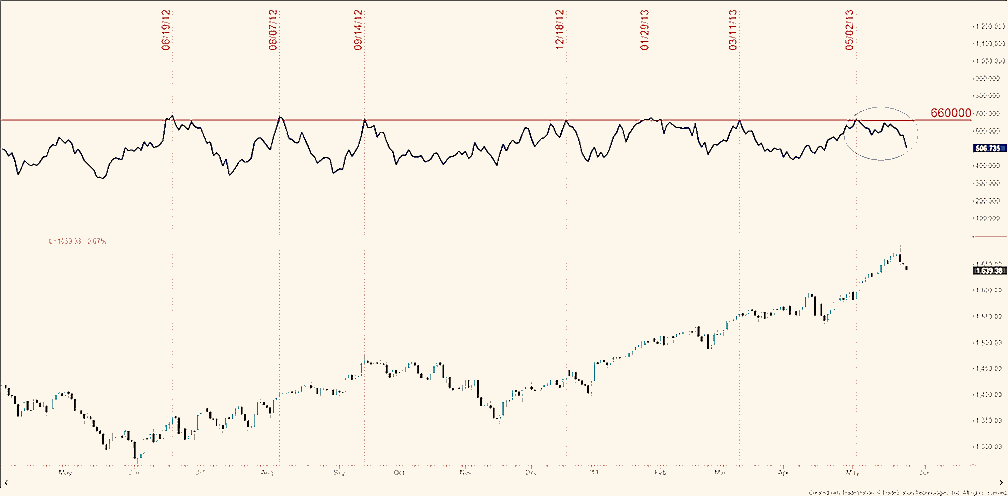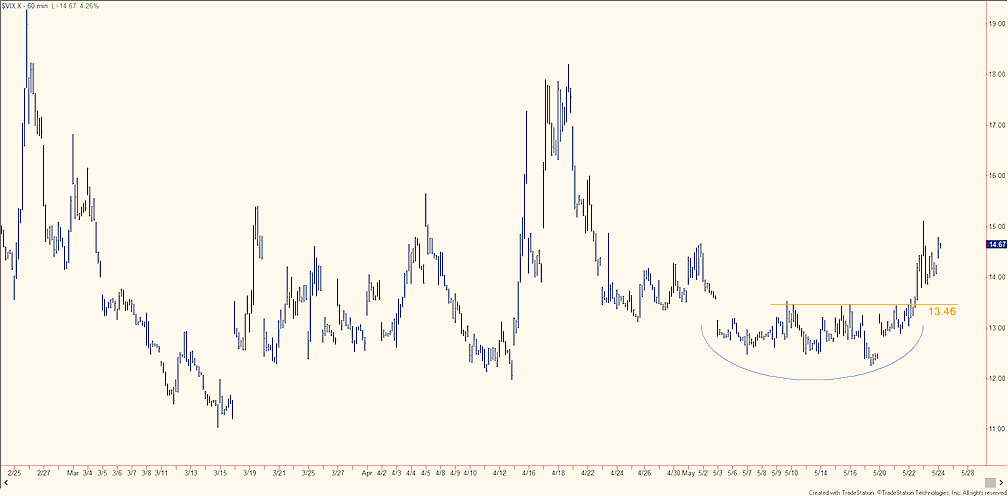 On Wednesday I said that this is the time Jesse Livermore would be heading south to go fishing after a decent run in stocks. As we head into the long weekend, I stand by that view (read my tweet here): It’s not time to buy the dip.
On Wednesday I said that this is the time Jesse Livermore would be heading south to go fishing after a decent run in stocks. As we head into the long weekend, I stand by that view (read my tweet here): It’s not time to buy the dip.
With the S&P 500 down from its Wednesday high, much of the crowd’s focus is on when to buy the dip. Naturally. The buy the dip strategy has worked since November. And all told, the decline in the wake of the Fed’s message about starting to scale back asset purchases sometime this summer has been modest, even in the wake of the plunge in Japanese equities and a stronger yen. But three reasons suggest, dare I say, it’s different this time. I’m not so concerned with pegging the top; time will tell if Wednesday’s high marks a near-term peak. Rather, I’m interested in whether it’s a good time to guide clients to initiate or add to long stock positions. And my answer to that question is no.
First, the amount of up volume – volume among shares that closed a session higher – has been falling. Even before Wednesday, the conviction to put more capital at risk had been receding since the beginning of May. So while the bullish response to the May labor report was real, there was less and less capital driving it. The blue line in the upper half of this chart shows the 10-day moving average of S&P 500 up volume. There are two important points here. One, since June 2012, every time this average reached 660,000 the “500” moved sideways or lower in the near term. The vertical red dashed lines denote each time that threshold was crossed. In some cases the index managed to extend gains initially but it eventually erased them. Two, this average peaked above 660,000 on 5/2 and will confirm a lower high and lower low today unless the market recovers substantially by the close. Click to enlarge the chart image.
Second, the VIX (CBOE Market Volatility Index) traced out a sizable base in May and broke out on Wednesday. Yesterday it reached its highest since 4/22. The VIX measures confidence versus fear in how options on the S&P 100 Index are priced. The breakout from the base shown below points to increased fear in the crowd. Additionally, the breakout comes after the VIX failed to undercut its March low. Another reason not to buy the dip here. Click to enlarge the chart image.
Finally, lest we forget, seasonal weakness in the May-October period still presents a risk to stocks. This seems to have left the crowd’s radar to some extent after stocks weathered a sloppy trend from mid-March to mid-April and broke higher in May, especially since the S&P 500 peaked in April in two of the last three years. The extension of gains in May doesn’t eliminate the seasonal risk to equities.
Those are my three cents for the day. On a separate note, in the interest of accountability, in my last piece on See It Market on May 9th, I argued the bullish case for iShares MSCI Mexico (EWW) and got it wrong. Sticking your neck out means having it chopped off sometimes. Onward and upward (well… not just yet perhaps).
Enjoy the long weekend, everyone.
Twitter: @ChrisBurbaCMT and @seeitmarket
Any opinions expressed herein are solely those of the author, and do not in any way represent the views or opinions of any other person or entity.










